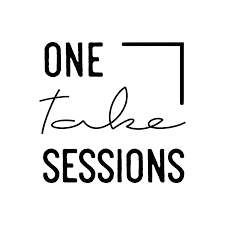After all he’d been through, we thought he was eternal. But no, Mark Lanegan was human too. We always knew it; it’s the first thing you feel when listening to his lyrics, his tragic interpretations, and his hoarse voice forged from columns of smoke and barrels of whiskey.
The greatest miracle of Lanegan’s survival of the grunge movement was in terms of his career. As the singer and songwriter of the Screaming Trees he was at the forefront of the movement, joining the band in 1984 in a small town near Seattle. The group soon made a name for itself on the US alternative scene alongside punk bands such as Dinosaur Jr, Meat Puppets, and Firehose. They were all proponents of an energetic and brutal rock, making reference to the gritty riffs of the Stooges and Back Sabbath.
In 1990, the Screaming Trees signed to a major record label and released their fifth album, opening the doors to a wider audience. This period marks the explosion of the grunge movement. They had preceded it but benefited greatly from the global hype. Thanks to support from Nirvana’s Kurt Cobain, who headlined the Glastonbury festival in 1992, Screaming Trees opened the show. They aspired to join the family of new US rockers who were making a lot of noise, such as Pearl Jam, Soundgarden and Alice in Chains. However, in terms of notoriety they always lagged behind somewhat.
At the same time as all this, Lanegan had been pursuing a solo career. It began in 1990 when he signed to the independent label Sub Pop, home of Nirvana. There, he developed his own personal passions and wrote songs that breathed life into his love of blues and country music, genres that he revisited in his own original way. He became a prolific composer on his own and got involved in multiple projects and collaborations, finally making a name for himself in 2000, the year the Screaming Trees broke up. Grunge was long dead by then and Lanegan, who had preceded it, outlived it – quite a feat considering his difficult personal life.
Born on 25th November 1964 to an abusive mother and an alcoholic father, Lanegan was only 12 when he turned to alcohol, gambling, and crime as his only means of escaping a dysfunctional family. By the time he was 18 he had an extensive criminal record, including a year in prison for drug-related convictions. Joining the Screaming Trees and achieving early stardom at 21 didn’t exactly spare him from excess. In one of his autobiographies Sing Backwards And Weep, he recalls wandering through some bad neighbourhoods with friends who were just as into syringes as he was – Jeffrey Lee Pierce of the Gun Club, Dylan Carlson of Earth, Josh Homme of Kyuss and future leader of Queens of the Stone Age, and Kurt Cobain, to whom Lanegan didn’t answer the phone on the day he killed himself. He would spend the rest of his life feeling guilty for not having taken that call.
In addition to a dozen solo albums, his career was mainly marked by his friendships. He recorded an album of Leadbelly covers with Kurt Cobain, joined Josh Homme for Queens Of The Stone Age, formed the duo The Gutter Twins with his old friend Greg Dulli of The Afghan Whigs, teamed up with Belle and Sebastian singer Isobel Campbell and multi-instrumentalist Duke Garwood, and took part in the Soulsavers collaborative project for an album. He even had some very happy collabs with electro producers such as Moby, Dave Clarke, UNKLE, Bomb the Bass, and Not Waving.
The man who once wryly wrote that ‘heroin saved me from drinking myself to death’ finally overcame his addictions, maintaining sobriety for the last ten years of his life before being weakened by Covid-19 and kidney disease. At 57 years old he leaves us with a phenomenal body of work, haunted by death and shot through with the quest for redemption.
Mark Lanegan
Having survived the grunge era during which he played with the Screaming Trees, the singer went back to the roots of Americana. He leaves behind a great deal of solo work, numerous collaborations, and a voice haunted by a life of hardship.
Share






.jpg)
.jpg)